Medina, also transliterated as Madīnah, is a city in the Hejazi region of the Arabian Peninsula and administrative headquarters of the al-Madinah Region of Saudi Arabia. At the city's heart is al-Masjid an-Nabawi ('The Prophet's Mosque'), which is the burial place of the Islamic prophet, Muhammad, and it is one of two holiest cities in Islam, the other being the city of Mecca.
Medina is generally considered to be the "cradle of Islamic culture and civilization". The city is considered to be the second-holiest of three key cities in Islamic tradition, with Mecca and Jerusalem serving as the holiest and third-holiest cities respectively. The original name of the city before the advent of Islam was Yathrib (Hebrew: יתריב; Arabic: يَثْرِب), and it is referred to by this name in Chapter 33 (Al-Aḥzāb, literally meaning 'The Confederates') of the Quran. It was renamed to Madīnat an-Nabī (literally 'the City of the Prophet' or 'The Prophet's City') after Muhammad's death.
Medina is home to several distinguished sites and landmarks, most of which are mosques and hold historic significance. These include the three aforementioned mosques, Masjid al-Fath (also known as Masjid al-Khandaq), the Seven Mosques, the Baqi' Cemetery where the graves of many famous Islamic figures are presumed to be located; directly to the southeast of the Prophet's Mosque, the Uhud mountain, site of the eponymous Battle of Uhud and the King Fahd Glorious Qur'an Printing Complex where most modern Qur'anic Mus'hafs are printed.
Related Subjects: Levantine Archaeology, Islamic Archaeology
During antiquity the city of Medina was known as Yathrib (يثرب). In historiography, the term "Yathrib" or "ancient yathrib" describes the periods of occupation starting with early Arab-Jewish settlements in the area during the fourth or fifth century CE. Though it is uncertain how far back the settlement history of Yathrib Oasis goes, it is believed that the area was inhabited at least for over 1,500-1,700 years (circa 900-700 BCE) before prophet Muhammad's migration from Mecca. The Yathrib region received peoples from various regions who formed its pre-Islamic community and fomulate history.
Much like most of the Hejaz, the historic city of Medina has seen numerous exchanges of power within its comparatively short existence in the recorded history. The history of Medina starts with the advent of Islam, after the Hijrah of prophet Muhammad, the event that marked the beginning of the Islamic calendar. Today, Medina continues to be a vital center for Islam, attracting millions of pilgrims and visitors from around the world. It remains a city of historical and religious significance, deeply embedded in the cultural and spiritual heritage of Saudi Arabia and the broader Islamic world.
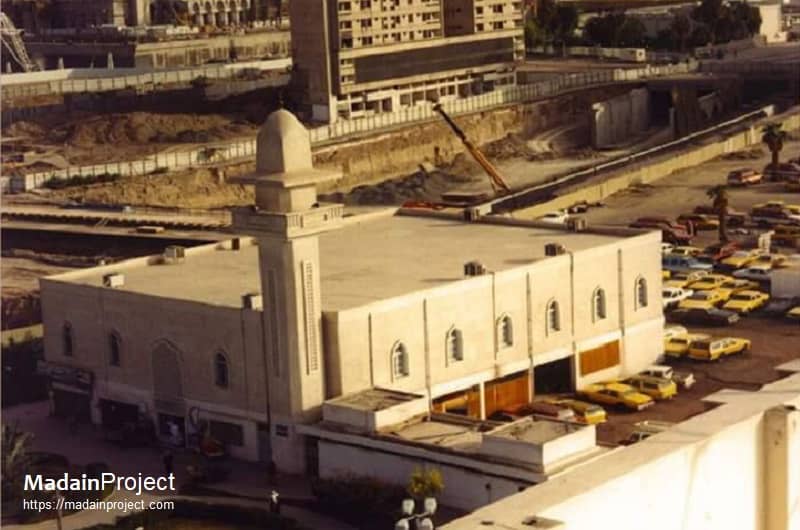
One of the most remarkable aspects of Medina is its rich religious heritage, embodied by a multitude of mosques that dot its landscape. These mosques not only serve as places of worship but also hold stories that resonate with the profound history of Islam, making them integral to the identity of this enchanting city. Read more

The Prophet's Mosque, second only in significance to the Kaaba in Mecca, is a place of profound veneration for Muslims worldwide. Beyond its historical and architectural splendor, it is a living testament to the teachings and compassion of the Prophet Muhammad, who, more than 1,400 years ago, laid its first stones. Read more

The historic mosque is named after the Sayed al-Shohada Hamzah ibn Abdul Muttalib who was a companion and paternal uncle of the prophet Muhammad, he was martyred at Uhud Battle. The sole significance of this mosque is historical, being the site of one of the major battles of early Islam. Read more
Over the centuries Masjid an-Nabawi has under gone various expansions and reconstructions. After an expansion during the reign of the Umayyad caliph al-Walid I, it now incorporates the final resting place of Muhammad and the first two Rashidun caliphs Abu Bakr and Umar. These expansions aimed to accommodate the growing Muslim population and provide a larger space for worship. Today, Masjid an-Nabawi remains a revered pilgrimage site, symbolizing the rich heritage and spiritual significance of Islam.

Its name, which translates to the "Mosque of the Two Qiblas," hints at the remarkable event that unfolded within its sacred walls. This mosque's significance lies in its role as the place where the Prophet Muhammad received divine revelation to change the direction of prayer (qibla) from Jerusalem to Mecca. Read more

The demolition of the tombs in Jannat al-Baqi took place around 1925 CE when the cemetery was extensively razed by the Saudi authorities. Before the destruction of Jannat al-Baqi, the cemetery contained a variety of structures and mausoleums that served as markers for the graves of important figures from Islamic history. Read more
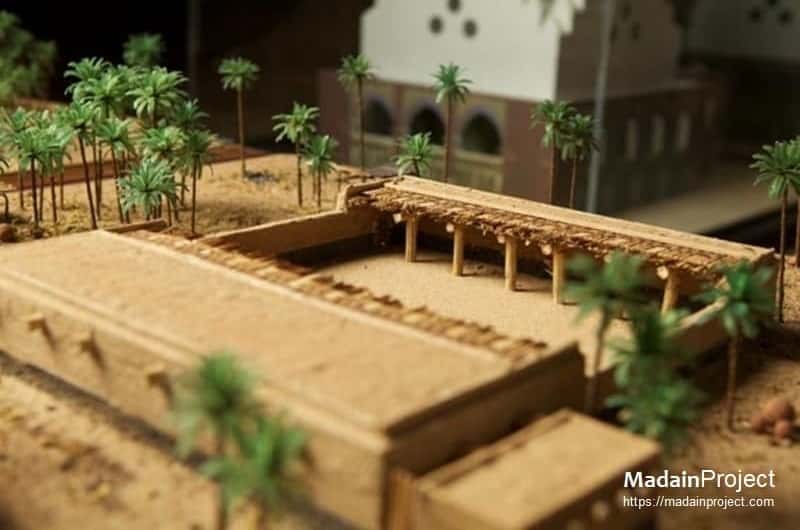
This purpose built museum is designed to provide insight into the rich history of the Holy City of Madinah. Its exhibits chronicle the city's evolution from the era of the Prophet Muhammad to the present day. Additionally, the museum houses a collection of rare manuscripts and a variety of detailed models as well. Read more
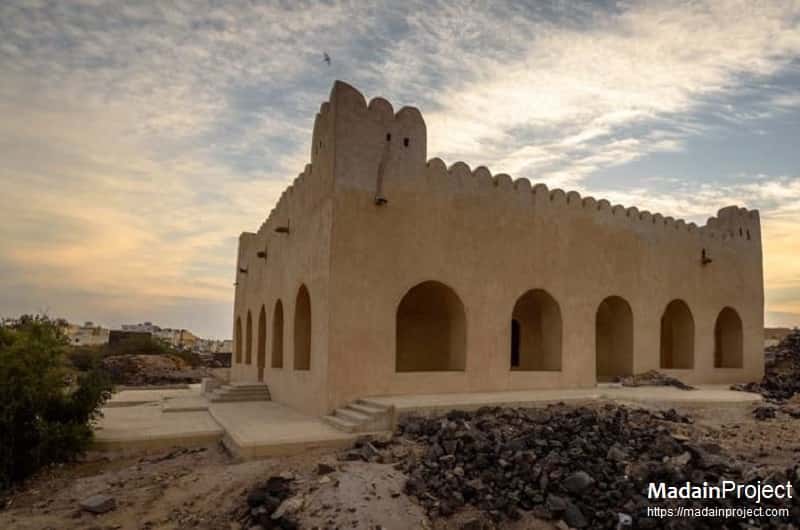
The Qasr of Urwah ibn Zubair, one of the renowned companions and religious leaders of Islam, was an agricultural estate that was built during the early Islamic eras and is famous for being a gathering and discussion place for the companions and scholars of that time. Read more

Masjid Ghamama (Mosque of Clouds) is a historic mosque located close to the Masjid an-Nabawi. It is believed that the Prophet Muhammad led a prayer for rain on this spot during a period of drought. After the prayer, a cloud miraculously appeared, and rain began to fall, ending the drought. Read more
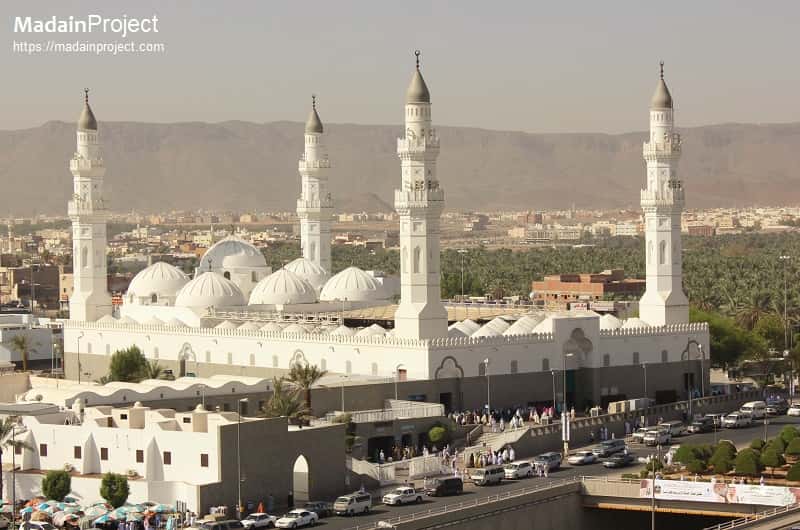
The foundation of the al-Quba Mosque, situated on the outskirts of the radiant city of Medina, can be traced back to the time of the Prophet Muhammad. It is revered as the first mosque ever built in Islam by prophet Muhammad and his companions shortly after their migration (Hijra) to Medina in 622 CE. Read more
The temple of Mahlab al-Naqa (Arabic: معبد محلب الناقة), also spelled Mahlib Annaqa, is a 6th-7th century BCE temple that was built by ancient Lihyanite people, located in the Khuraybah area of al-Ula Governorate, Saudi Arabia. The temple contains a purification basin carved in front of a Lihyanite temple. The current ruins of the ancient site, located in Khuraybah area of al-Ula Governorate, which date back to the fourth century CE, includes a number of well-preserved ruins, including a palace, tombs and a small mosque from the later Islamic period.

The Jannat al-Baqi, or the Jannat ul-Baqi or Baqi al-Gharqad, is a historic cemetery located adjacent to the Masjid Nabawi. It is renowned for being the final resting place of numerous companions of the Prophet Muhammad, members of his family, and other prominent figures from the early days of Islam. Read more

The Bab Anbariya ("Gate of Anbar") is known for its historical importance, as it is named after a prominent figure from Islamic history named Anbar ibn Abi Sufyan, a cheiftan in the Ottoman Empire, who donated the part of the land close to the gate for a military academy during the Ottoman period. Read more

The site of the Battle of Badr holds immense historical significance in Islam. Located near the town of Badr in present-day Saudi Arabia, it was the site of a pivotal battle in March 624 CE. The exact location of the battlefield is approximately 80 miles (130 kilometers) southwest of Medina. Read more

The small hill-top mosque, Masjid al-Fatah, marks the historic spot that is thought to have been used as the commanding post by the prophet Muhammad in the Battle of the Trench. It is one of the Seven Mosques built at the site of Ghazwa Khandaq. Read more
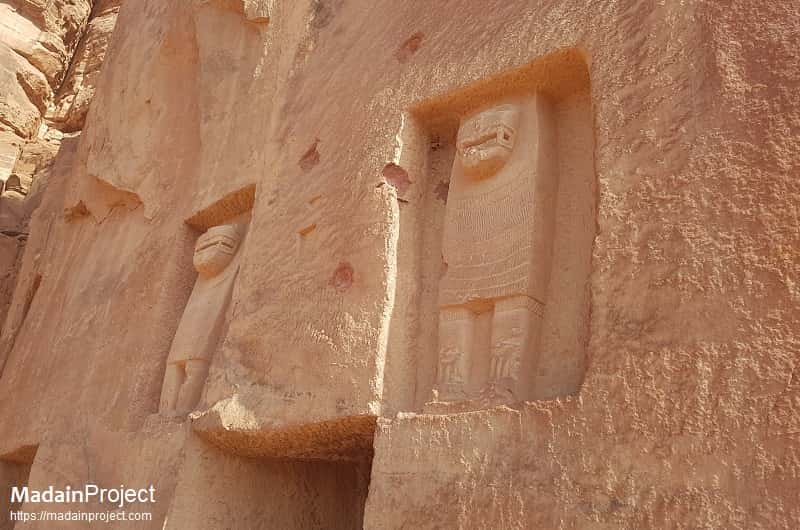
This UNESCO World Heritage Site is renowned for its ancient rock-cut tombs and archaeological remnants, which date back to the Nabatean civilization. One of the standout features of the Lion Tombs is the intricate rock-cut facades of the burial niches. Read more

The Miqat Dhul Hulaifah Mosque is one of the five designated miqats (stations), around and oustide the boundary of Mecca, where pilgrims assume their state of Ihram (specific clothing), a sacred state of ritual purity, before proceeding to Mecca. Read more
The Mada’in Saleh, also called al-Hijr or Hegra, is a pre-Islamic archaeological site. A majority of the vestiges date from the Nabatean kingdom (1st century CE). The site constitutes the Saudi Kingdom’s southernmost and largest settlement after Petra, its capital. Traces of Lihyanite and Roman occupation before and after the Nabatean rule, respectively, can also be found in situ, while accounts from the Qur’an tell of an earlier settlement of the area by the tribe of Thamud in the 3rd millennium BCE.
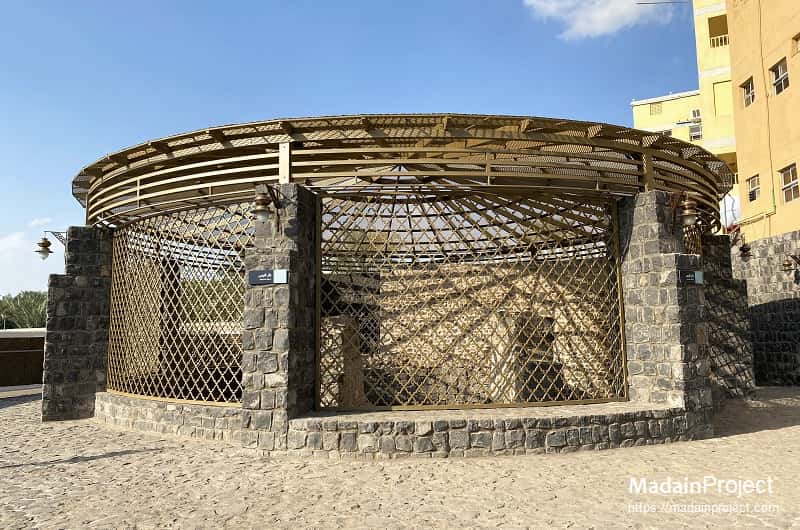
The Bir Ghars is the site where prophet Muhammad once made a stop drank and watered his camel. According to tradition, the water from this now defunct well was favoured by the prophet Muhammad so much that he made a request to be bathed with its water after his demise. Read more
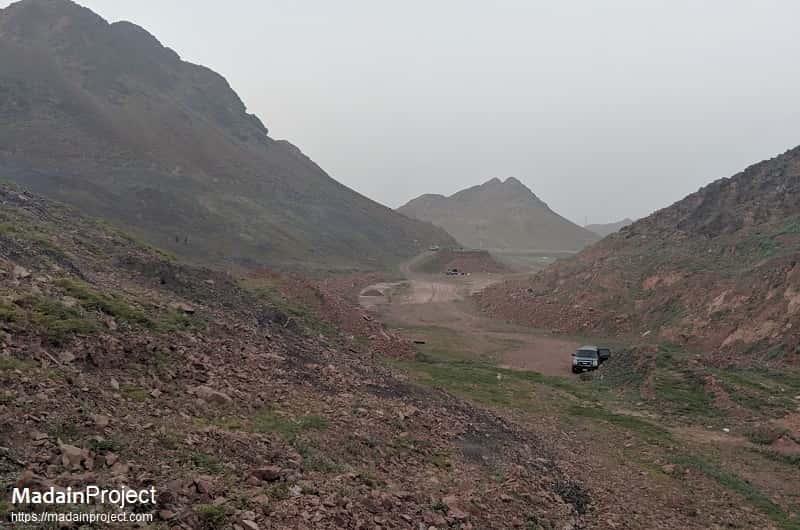
The Wadi al-Aqiq, situated south of Medina, holds historical significance in Islamic history. It is believed that the Prophet Muhammad passed through this valley on his way to various battles and expeditions. The valley also served as a route for trade and commerce in ancient times. Read more
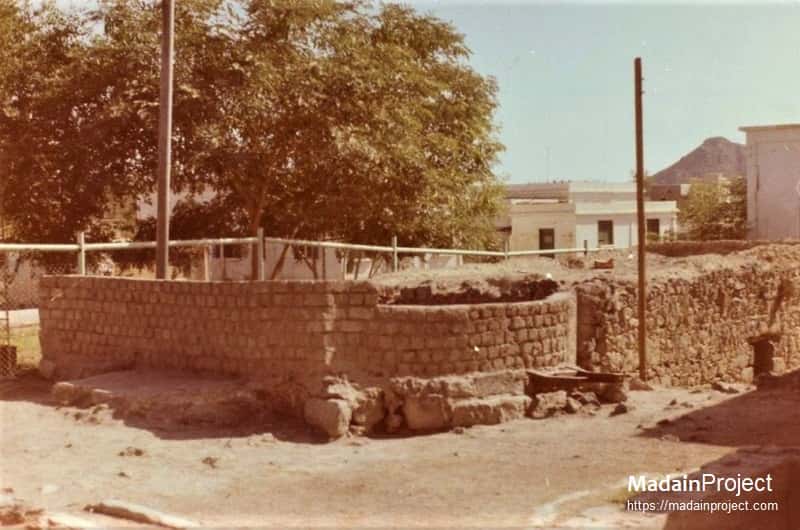
The Well of Uthman, or the Well of Rumah the Jew (who sold the well to Uthman ibn Affan), dates back to the time of the Prophet Muhammad and was one of the few sources of fresh water in the area. The "Well of Uthman" was located in the lower part of Wadi al-Aqiq, where the flood waters collected. Read more
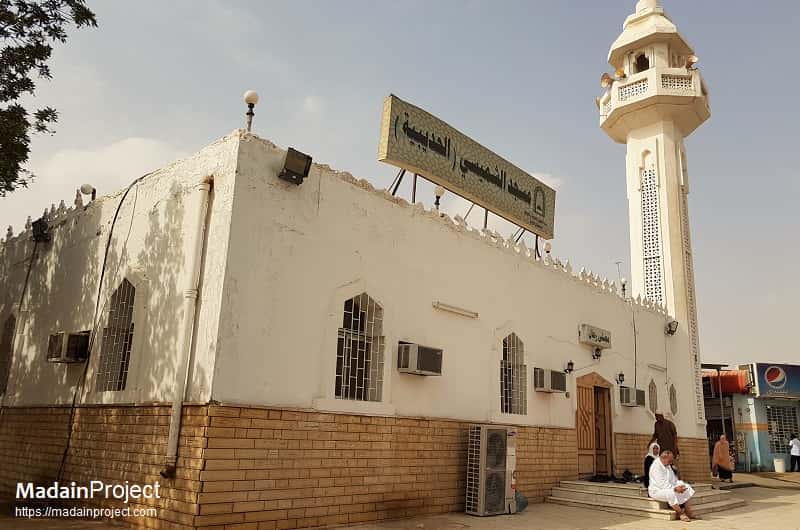
The Masjid al-Shumaisi, is a modern mosque located in the city of Hudaybiyya (also spelled Hudaybiyah or Hudaybiyyah), marks the historically believed site of the Treaty of Hudaybiyah signed between the Muslims of Medina and the Meccan Quraish in the year 628 CE. Read more

The Bir Ha' was one of the seven renowned wells in Madinah during the time of the Prophet Muhammad. These wells served as crucial water sources for the early Muslim community, providing sustenance and facilitating daily life in the arid environment of the region. According to historical accounts, the well was owned by Abu Talha al-Ansari, a notable companion of the Prophet. Read more

The al-Madinah Museum exhibits history and heritage of city of Medina featuring different archaeological collections, visual galleries and rare photographs. The museum includes an exhibition presenting the evolution of Masjid Nabawi from its humble beginning to the modern complex. Read more
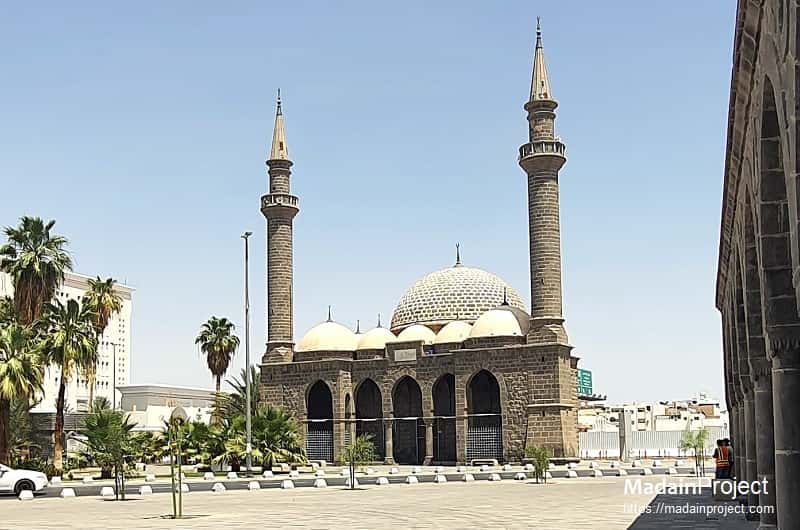
The Anbariya Mosque, also referred to as the Hamidiye Mosque, is a historic mosque located in Medina, Saudi Arabia. It was constructed by the Ottoman Turks in 1908 during the reign of Sultan Abdülhamid II. The mosque is named after the Anbariya Gate, which was situated nearby. This religious structure is associated with the Hejaz Railway project and is located adjacent to the al-Muazzim Railway Station in Medina. Read more

The Saqifa (a covered communal place for conversation) of the Banu Sa'ida clan refers to the location of an event in early Islam where some of the companions of the prophet Muhammad pledged their allegiance to Abu Bakr as the first caliph and successor to Muhammad shortly after his death in 11 Hijri. Today a beautiful garden marks the site on the north-western side of the Masjid Nabawi. Read more

Traditionally believed to mark the site where according to the tradition prophet Muhammad offered his first Jummah prayer while migrating to the Yathrib Oasis. It is located near Wadi Ranuna', 900 metres (3,000 feet) north of Quba Mosque, and 6 km south of Masjid Nabawi. Read more
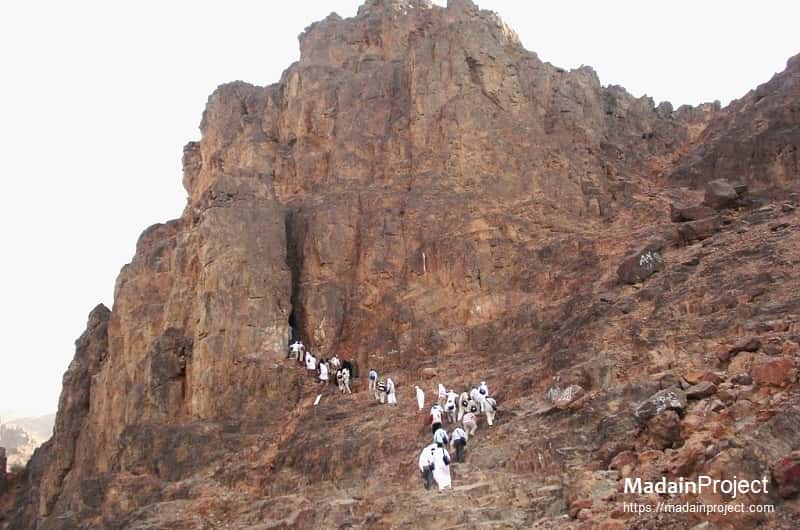
Jabal Uhud is most famous for being the site of the Battle of Uhud, which took place in the year 625 CE during the lifetime of the Prophet Muhammad. This battle was fought between the Muslim community of Medina and the Quraysh tribe of Mecca. It was a pivotal moment in the early history of Islam. Read more
Signup for our monthly newsletter / online magazine.
No spam, we promise.